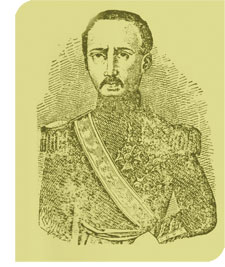| |
 What's in a (Filipino) Name?, Part 2 What's in a (Filipino) Name?, Part 2
by Ping Bayani
August 2016
Editor’s note: Ever wondered why many, if not most, Filipino surnames are Hispanic? What were the native family names and what happened to them? Below is the first of excerpts from an article written by Penélope V. Flores, Professor Emeritus at San Francisco State University, from this website. It gives an insight into why and how we got to the surnames we carry today.
He (Governor Claveria) tore pages of the Catalogo and gave them to those present. Consequently, what happened was unexpected. Since the lists of surnames were listed in alphabetical order, provinces appeared to have surnames beginning with a certain letter of the alphabet. An appropriate example is like tearing several pages from a telephone book. The likelihood of having the same beginning letter is high.
In my province of Mindoro alone, in Lubang community, the surnames of most people begin with "V" -- Ventura, Villamin, Villaraza, Villarosa, Villarica, Villavicencio, Villaclara, etc. In my hometown of Calapan, Oriental Mindoro, the surnames in my class included Acedillo, Acedera, Abaca, Abadilla, Abierto, Acera, Aboboto, Agay, Acasio, Adeva, Alvaro, Alfalfaro, Alcancia, Abolencia, Abadejo, Abad and so on.
In the town of Miagao, Iloilo, all surnames began with "M."
This surnaming program was enforced with severe penalties. One example was Dr. José Rizal’s mother. She was arrested and made to walk all the way from Biñan to the provincial capital of Laguna because among other things, she refused to use the name Realonda, which was assigned to her.
This is the reason why in the Philippines, we carry Hispanic surnames. They were allocated to us by decree. It never came from our own ancient naming patterns. In effect, it was an intrusion. It truncated us from our own personal identity and cast us off from our inner core of who we really are.
How some indigenous names remained and persisted had two possibilities. Some families were able to retain their old nomenclature because, before the decree was imposed, these families had been registered in the town census as pacified, baptized and had paid their taxes.
The other possibility was that the old surnames were not changed because their names were already registered in the government books or municipalities for some misdemeanors (prison cells). The most likely explanation was that others fled to the hills.
|
|

 What's in a (Filipino) Name?, Part 2
What's in a (Filipino) Name?, Part 2